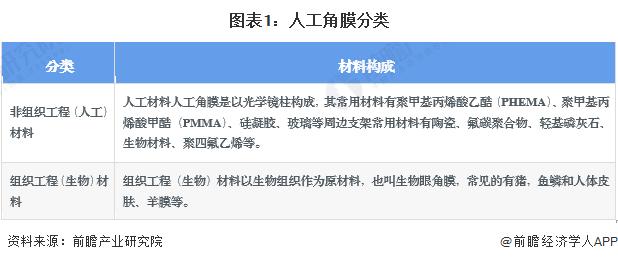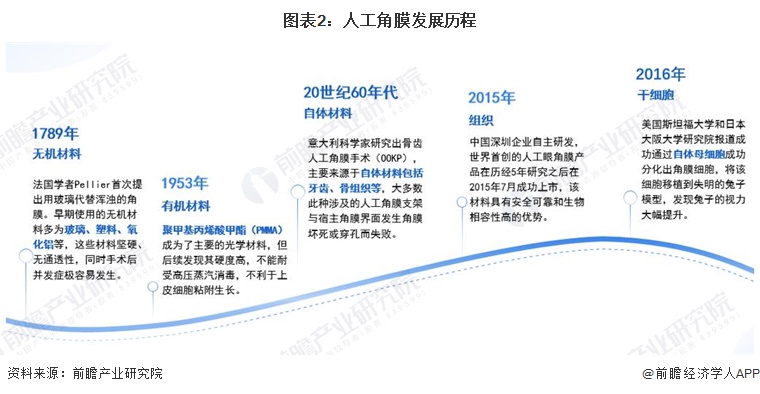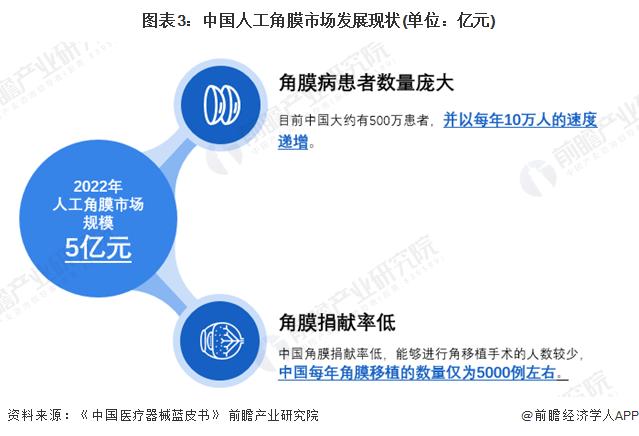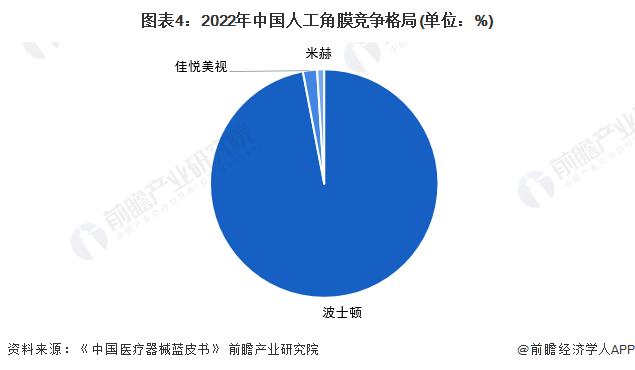Core data: classification of artificial cornea; Artificial cornea market size; Artificial cornea competition pattern
Definition
Artificial cornea refers to an implantable medical device made of artificial materials, which is surgically implanted into the affected eye to replace the cloudy cornea of patients with corneal blindness. Clinically, about 15% of corneal blindness patients are completely destroyed by cornea after suffering severe corneal chemical injury or thermal burn, or patients who have failed multiple human corneal transplantation, or cornea is covered by a large number of new blood vessels due to problems in cornea conjunctiva and tear secretion caused by immunity. Traditional human keratoplasty in these patients will cause postoperative immune rejection, resulting in a very low success rate of surgery. Corneal implants are the only option for these patients. On the one hand, artificial corneal transplantation will not lead to surgical failure due to immune rejection, on the other hand, the visual effect obtained after artificial corneal transplantation will be better than that of human corneal donor transplantation. The material sources of artificial cornea can be divided into non-tissue engineering (artificial) materials and tissue engineering (biological) materials.

The exploration of artificial corneal materials began in 1789, and after more than 200 years of research and development, artificial corneal materials have gradually developed from inorganic materials, organic materials, autologous materials, tissues, and stem cells. In recent years, with the rapid development of materials science and bioengineering, tissue engineering cornea technology with biological activity is becoming more and more mature. Its biocompatibility is better, biosafety is high, can be quickly integrated with the surrounding tissues, and with the migration and reconstruction of their own cells, the transplanted cornea is gradually transparent, so as to better improve the vision of patients.

Development status: There is a huge gap in the market demand for artificial cornea
Keratopathy is the second leading cause of blindness after cataract, and there are currently about 5 million patients in China, and the rate is increasing by 100,000 people every year. Corneal donation is an important source of cornea. China has a low corneal donation rate, and the number of people who can perform Angle transplantation is small. The number of corneal transplantation in China is only about 5,000 cases per year, which cannot meet the market demand. The proportion of the elderly population continues to rise, and the number of related patients continues to expand, which also makes the demand for corneal transplantation increasingly urgent, and the artificial cornea market continues to expand. According to Eshare medical equipment Institute estimates, China's artificial cornea market size will be 500 million yuan in 2022.

Competitive landscape: Boston has 97% artificial corneas
Due to high technical barriers, the artificial corneas commonly used in clinical practice around the world mainly include Boston type artificial cornea, bone-tooth type artificial cornea, AlphaCor type artificial cornea, MICOF type artificial cornea and CorNeat type artificial cornea. The Chinese market is still in its infancy, with Boston accounting for about 97% of artificial corneas.

Domestic R & D and production enterprises of artificial cornea mainly include Guangdong Jiayue Mevision Biotechnology Co., LTD., Beijing Mihe Medical Equipment Co., LTD., and the two companies' artificial cornea products were approved in 2021.

|
Last:None
Next:Appearance and function examination of surgical instruments |
Return |